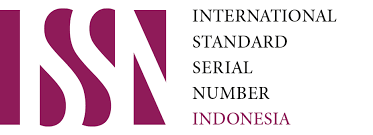Transformasi industri pakaian outdoor menuju keberlanjutan: integrasi ekonomi sirkular dan pemasaran hijau dalam mewujudkan SDG 12
Kata Kunci:
Pakaian Outdoor, Keberlanjutan Ekononomi, Ekonomi Sirkular, Pemasaran Hijau, Perilaku KonsumenAbstrak
Penelitian ini mengkaji transformasi industri pakaian outdoor menuju keberlanjutan melalui integrasi strategi produksi berkelanjutan, pemasaran hijau, dan prinsip ekonomi sirkular. Dengan menggunakan pendekatan kualitatif deskriptif berbasis kajian literatur sistematis, studi ini menganalisis berbagai publikasi ilmiah terkini untuk mengidentifikasi strategi efektif dalam mengurangi dampak lingkungan industri tekstil. Temuan menunjukkan bahwa penggunaan material daur ulang, desain modular, serta sistem take-back mampu mengurangi limbah tekstil dan memperpanjang siklus hidup produk. Di sisi lain, pemasaran hijau seperti pelabelan ekologi, promosi produk secondhand, dan kampanye edukatif dapat meningkatkan kesadaran konsumen dan mendorong perilaku konsumsi yang lebih berkelanjutan. Teori Planned Behavior (TPB) digunakan sebagai kerangka analisis untuk menjelaskan peran sikap, norma subjektif, dan persepsi kontrol perilaku terhadap niat konsumsi. Hasilnya menunjukkan perlunya pendekatan integratif antara inovasi produk dan strategi pemasaran berbasis nilai untuk menjembatani kesenjangan antara niat dan tindakan konsumen. Studi ini juga menekankan pentingnya kolaborasi lintas sektor dalam menciptakan ekosistem industri yang adaptif, sirkular, dan berkelanjutan guna mendukung pencapaian SDG 12.
Referensi
Abbate, S., Centobelli, P., Cerchione, R., Nadeem, S. P., & Riccio, E. (2024). Sustainability trends and gaps in the textile, apparel and fashion industries. Environment, Development and Sustainability, 26(2), 2837–2864. https://doi.org/10.1007/s10668-022-02887-2
Ayar, I., & Gürbüz, A. (2021). Sustainable consumption intentions of consumers in Turkey: a research within the theory of planned behavior. Sage Open, 11(3), 21582440211047564.
Beames, S., Høyem, J., Kraalingen, I. Van, Eriksen, J., & Vold, T. (2024). The Jacket : Making Sustainable Clothing Choices in Outdoor Education. 9–31.
De Felice, F., Fareed, A. G., Zahid, A., Nenni, M. E., & Petrillo, A. (2024). Circular economy practices in the textile industry for sustainable future: A systematic literature review. Journal of Cleaner Production, 144547.
Debnath, B., Siraj, T., Harun, K., Rashid, O., Bari, A. B. M. M., Lekha, C., & Al, R. (2023). Sustainable Manufacturing and Service Economics Analyzing the critical success factors to implement green supply chain management in the apparel manufacturing industry : Implications for sustainable development goals in the emerging economies. 2(September 2022). https://doi.org/10.1016/j.smse.2023.100013
Goetz, D., & Goetz, D. (2023). of outdoor sports orientation Surfing the Green Wave. January.
Gonçalves, A., & Silva, C. (2021). Looking for sustainability scoring in apparel: A review on environmental footprint, social impacts and transparency. Energies, 14(11). https://doi.org/10.3390/en14113032
Gossen, M., & Kropfeld, M. I. (2022). “Choose nature. Buy less.” Exploring sufficiency-oriented marketing and consumption practices in the outdoor industry. Sustainable Production and Consumption, 30, 720–736. https://doi.org/10.1016/j.spc.2022.01.005
Jia, F., Yin, S., Chen, L., & Chen, X. (2020). The circular economy in the textile and apparel industry: A systematic literature review. Journal of Cleaner Production, 259, 120728.
Kumar, S., & Jain, E. (2024). Role of Theory of Planned Behavior in Interpreting Sustainable Consumption Behavior: A Meta-Analysis. Indian Journal of Marketing, 54(10), 63–81.
Lavuri, R. (2022). Extending the theory of planned behavior: factors fostering millennials’ intention to purchase eco-sustainable products in an emerging market. Journal of Environmental Planning and Management, 65(8), 1507–1529.
Liu, J., Liang, J., Ding, J., Zhang, G., Zeng, X., Yang, Q., Zhu, B., & Gao, W. (2021). Microfiber pollution: an ongoing major environmental issue related to the sustainable development of textile and clothing industry. Environment, Development and Sustainability, 23(8), 11240–11256. https://doi.org/10.1007/s10668-020-01173-3
Magwegwe, F. M., & Shaik, A. (2024). Theory of planned behavior and fast fashion purchasing: an analysis of interaction effects. Current Psychology, 43(36), 28868–28885.
Naskar, S. T., & Lindahl, J. M. M. (2025). Forty years of the theory of planned behavior: a bibliometric analysis (1985–2024). Management Review Quarterly, 1–60.
Nowell, L. S., Norris, J. M., White, D. E., & Moules, N. J. (2017). Thematic Analysis: Striving to Meet the Trustworthiness Criteria. International Journal of Qualitative Methods, 16(1), 1609406917733847. https://doi.org/10.1177/1609406917733847
Olofsson, L., & Mark-Herbert, C. (2020). Creating shared values by integrating un sustainable development goals in corporate communication—the case of apparel retail. Sustainability (Switzerland), 12(21), 1–15. https://doi.org/10.3390/su12218806
Peters, J., & Simaens, A. (2020). Integrating Sustainability into Corporate Strategy : A Case Study of the Textile and Clothing Industry. 1–35.
Ramírez-Escamilla, H. G., Martínez-Rodríguez, M. C., Padilla-Rivera, A., Domínguez-Solís, D., & Campos-Villegas, L. E. (2024). Advancing toward sustainability: a systematic review of circular economy strategies in the textile industry. Recycling, 9(5), 95.
Shen, X., Xu, Q., & Liu, Q. (2022). Predicting sustainable food consumption across borders based on the theory of planned behavior: A meta-analytic structural equation model. PloS One, 17(11), e0275312.
Singh, G., & Kumar, A. (2025). Achieving fashion sustainability: circular economy enablers and the theory of planned behavior. Global Knowledge, Memory and Communication.
Sudusinghe, J., Jayaratne, P., & Kumarage, A. (2018). UN SDGs Shaping Sustainable Supply Chains: The Case of Apparel Manufacturers in Developing Countries. 102–107. https://doi.org/10.1109/SOLI.2018.8476697
Wiegand, T., & Wynn, M. (2023). Sustainability , the Circular Economy and Digitalisation in the German Textile and Clothing Industry.
Unduhan
Diterbitkan
Cara Mengutip
Terbitan
Bagian
Lisensi
Hak Cipta (c) 2025 rangga dana langit

Artikel ini berlisensi Creative Commons Attribution 4.0 International License.










